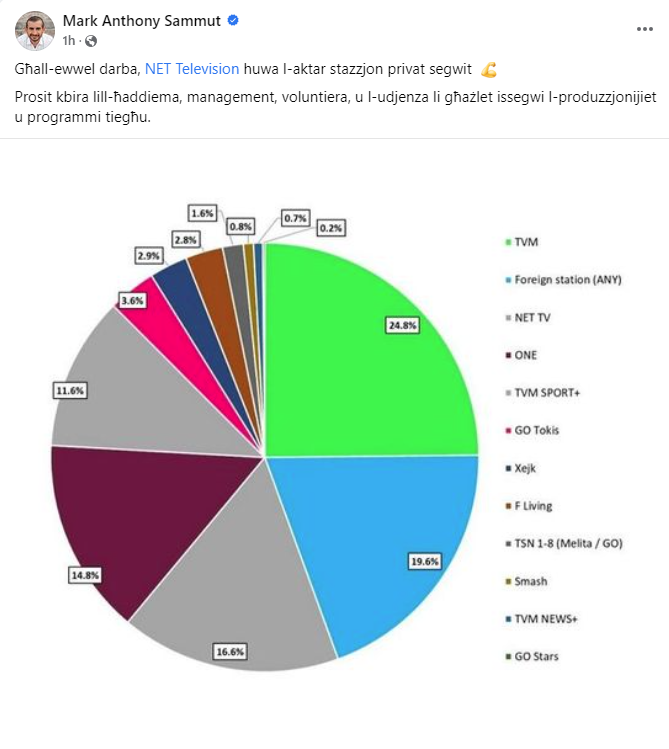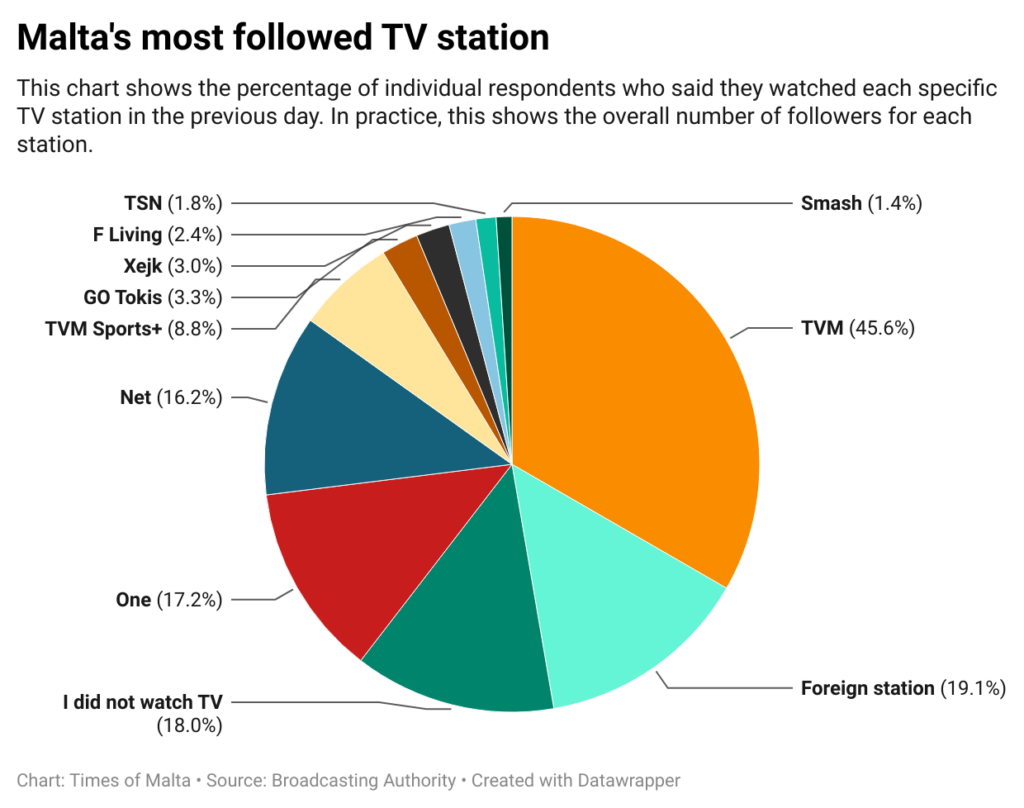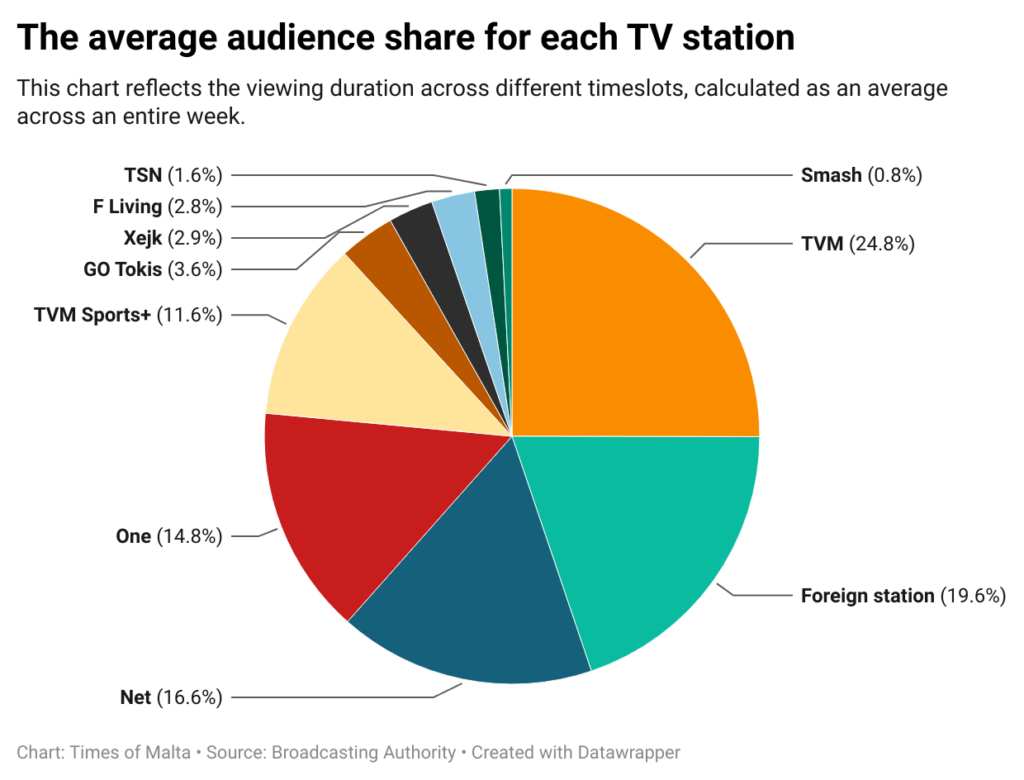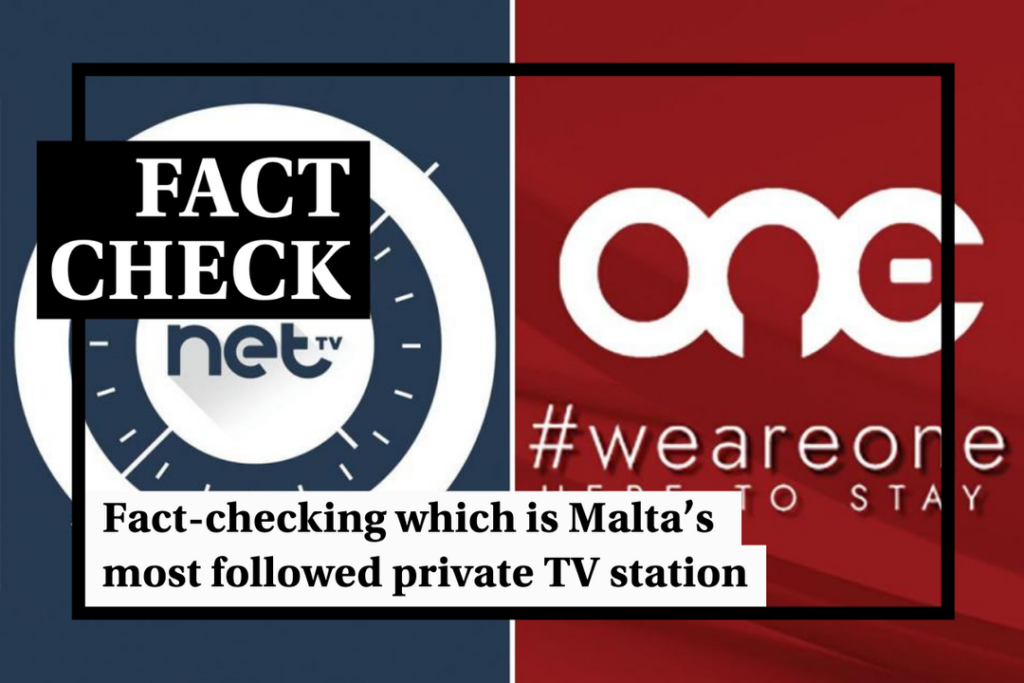A Broadcasting Authority survey published on Monday 9th October ushered in a rare moment of unity across the political spectrum, with both Labour Party-run TV station One and Nationalist Party-run station Net TV proudly proclaiming that they are the most followed private TV station in the country.
A headline published by One announced that “One remains most followed private television station”, while their counterparts at Net TV claimed that “Net TV is officially the most followed private TV station”.

These claims were gleefully echoed by each party’s supporters, each praising their parties’ efforts in topping the table.
Meanwhile, Facebook discussion groups were flooded with people debating who is right, with both sides presenting seemingly different statistics and pie charts to prove their point.
In a popular sponsored Facebook post, One published a pie chart taken from the Broadcasting Authority’s report showing that One is the most followed station. On the other hand, an equally popular post by Nationalist Party MP Mark Anthony Sammut showed a different pie chart, taken from the same report, listing Net TV on top.

In both cases, the caption explaining the chart’s content was, somewhat misleadingly, cropped out of the screenshot.
How does the survey measure TV station followers?
The survey uses two metrics, both of which look at slightly different things, to provide a snapshot of the viewing public’s preferences during the week-long survey period.
Times of Malta reached out to the survey’s researchers to understand the difference between the two.
The first metric, namely the most followed TV station, asks respondents to list up to three TV stations that they watched on the previous day. TV stations are then ranked according to how many times they were mentioned.
This essentially shows the overall number of individual viewers that watched each specific TV station the previous day.
The second metric, the average audience share, goes further, looking into the viewing duration by splitting the day into 48 timeslots (each of which is thirty minutes long) and calculating how many views each station received in each timeslot on each particular day of the week.
In this way, researchers can better understand how long people are spending watching each individual TV station on each particular day.
In simple terms, if a person said they watched a particular TV station for two hours they would count once towards the first metric (the most followed TV station) but four times in the second metric (average audience share) because they would have watched across four separate timeslots.
So, who is right?
In terms of the overall number of followers, One is marginally ahead, mentioned by 17.2% of respondents, while Net TV trails just behind at 16.2%.

In real terms, this means that a total of 318 survey respondents said that they watched One on the previous day, compared to 300 who said they watched Net TV.
In total, 1,852 people said they regularly watch TV at all, with the highest share of them saying they either watched TVM (the state broadcaster) or a foreign station on the previous day.
In terms of followers. the survey findings suggest that Net TV was a little more popular amongst younger viewers under the age of 30, while One was more viewed by those over the age of 41, although the small numbers make it difficult to draw any definitive conclusions.
Likewise, One was more popular amongst men, while women were more likely to have watched Net TV.
Things are a little different when it comes to the average audience share, where Net TV scores 16.6%, marginally ahead of One at 14.8%. Once again, both stations are well behind both TVM and foreign stations.

In practice, this means that Net TV viewers tended to watch programmes for a little longer (and across a larger number of the 30 minute timeslots) compared to One, where viewers were more likely to dip in and out for slightly shorter periods.
Curiously, Net TV was particularly popular amongst its viewers on weekdays, especially Thursdays and Fridays, when its audience share was even higher than that of TVM. One, on the other hand, was the more popular of the two on weekends.
Verdict
The survey uses two metrics to examine TV audiences, one which looks at the overall number of individual viewers while the other sheds light on the time that people spend watching each station.
The survey found that One has the highest number of individual followers, making it the most widely followed station, however, Net TV viewers tend to spend more time watching the channel.
The Times of Malta fact-checking service forms part of the Mediterranean Digital Media Observatory (MedDMO) and the European Digital Media Observatory (EDMO), an independent observatory with hubs across all 27 EU member states that is funded by the EU’s Digital Europe programme. Fact-checks are based on our code of principles.
Let us know what you would like us to fact-check, understand our ratings system or see our answers to Frequently Asked Questions about the service.





